If you’re looking for a plant that’s as ornamental as it is delicious, look no further than the Juneberry, scientifically known as Amelanchier lamarckii. Sometimes called Serviceberry, Shadbush, or Saskatoon, this beautiful deciduous shrub or small tree offers a stunning four-season display — from its early spring blossoms to its rich autumn foliage and sweet, blueberry-like fruit.
Inspired by the YouTube video “Juneberry or Amelanchier lamarckii”, this blog explores everything you need to know about this remarkable plant: how to identify it, why it deserves a place in your garden, how to grow it successfully, and how to make the most of its nutritious fruit.
What Is a Juneberry?
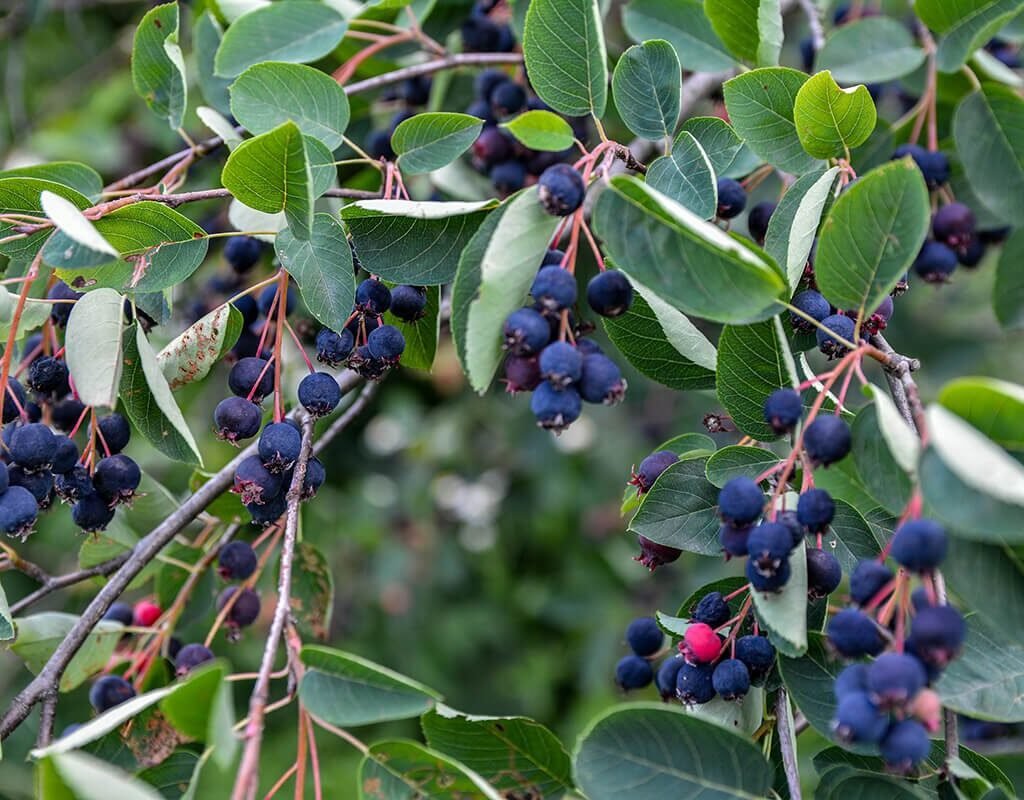
The Juneberry (Amelanchier lamarckii) is a multi-stemmed shrub or small tree native to North America but now widely cultivated in Europe for its beauty and fruit. It belongs to the Rosaceae family, which also includes apples, cherries, and roses.
The name Juneberry comes from the timing of its fruit ripening — typically in June. The berries resemble blueberries in size and color but have a distinct, rich flavor that combines hints of apple, almond, and cherry.
Also known as Amelanchier canadensis or Amelanchier alnifolia in different regions, this plant has become increasingly popular as both an edible landscape shrub and a wildlife-friendly garden addition.
The All-Season Beauty of Amelanchier lamarckii
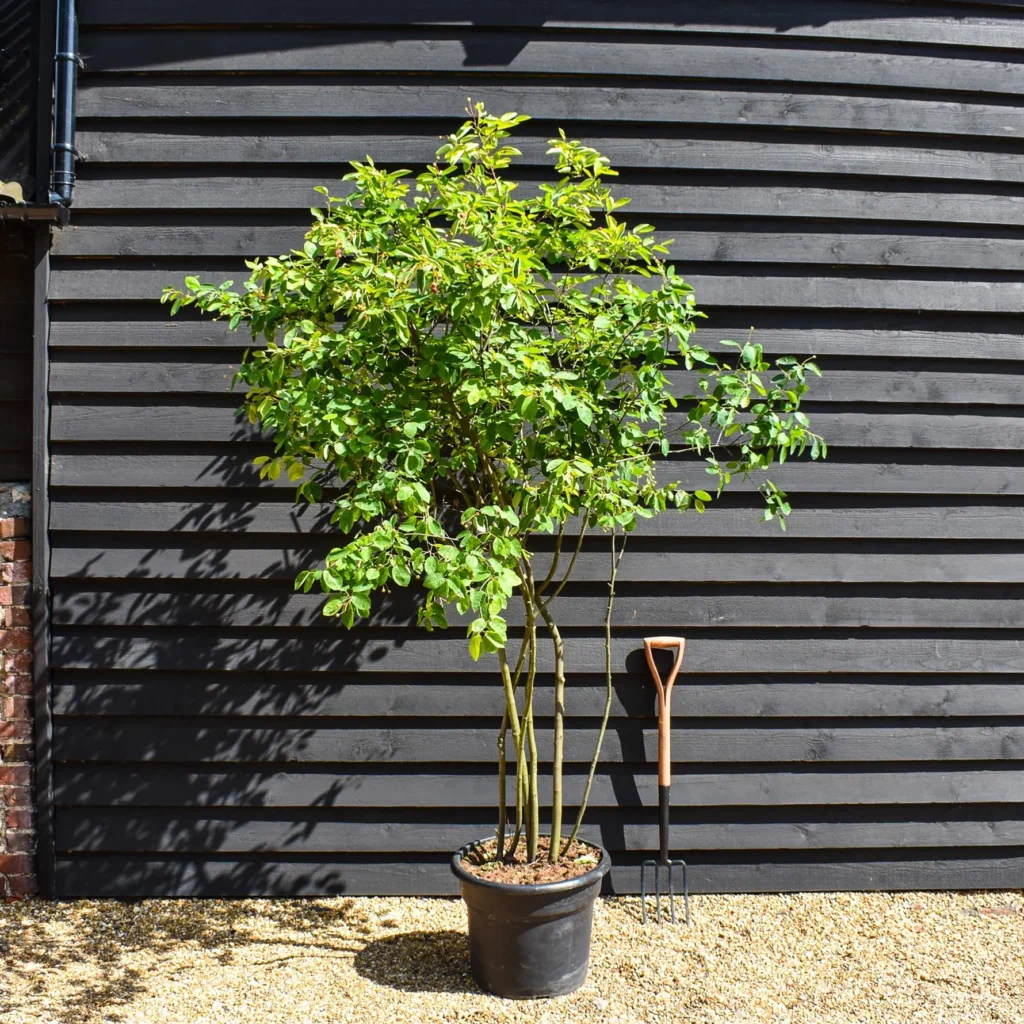
Juneberries aren’t just functional — they’re breathtaking throughout the year:
- Spring: Early in the season, before most trees leaf out, the shrub bursts into masses of delicate white star-shaped flowers. These blossoms often appear just as the shad fish swim upstream to spawn, which is why the plant is also called Shadbush.
- Summer: By late spring to early summer, the plant bears clusters of purple to blue-black berries that look similar to blueberries. They’re sweet, juicy, and perfect for fresh eating or cooking.
- Autumn: The foliage transforms into vibrant shades of orange, red, and gold, rivaling the best maples in fall color.
- Winter: Its smooth gray bark and graceful structure add subtle elegance to the garden even when bare.
With this combination of ornamental and edible value, Amelanchier lamarckii is a must-have for gardeners who appreciate plants that perform beautifully year-round.
Why You Should Grow Juneberries
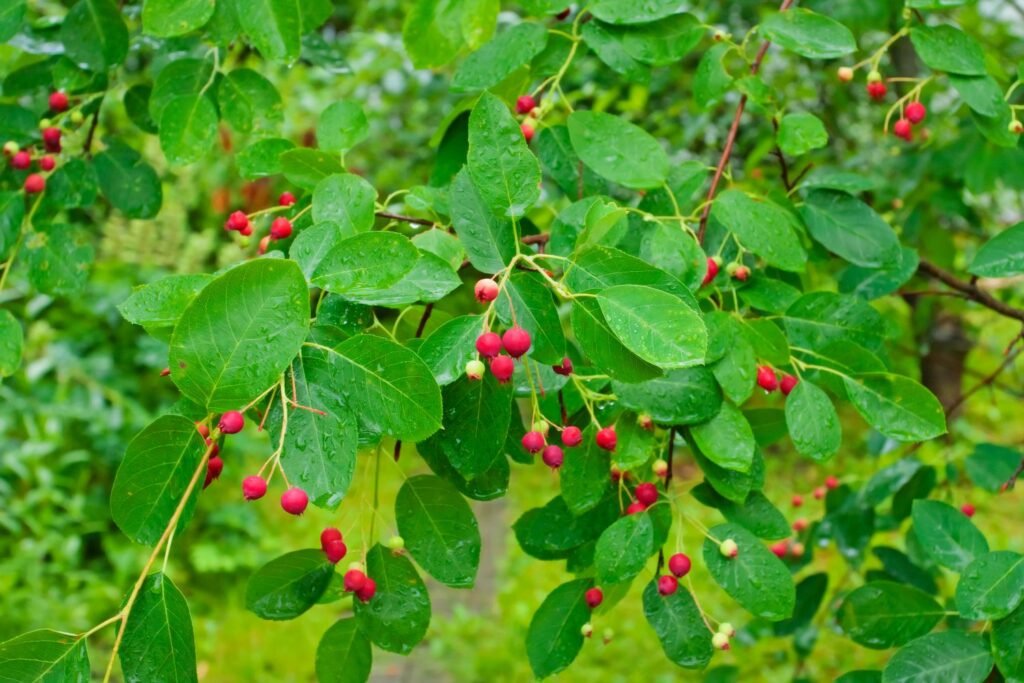
The Juneberry is one of those plants that checks nearly every box on a gardener’s wishlist. Here’s why:
- Edible and Delicious Fruit:
The berries are rich in flavor, similar to a mix between blueberry and almond. They’re perfect for pies, jams, syrups, smoothies, or simply eaten fresh from the bush. - Nutrient-Packed Superfood:
Juneberries are full of antioxidants, fiber, iron, and vitamin C, making them as healthy as they are tasty. - Wildlife Magnet:
The flowers attract bees and pollinators, while the berries are loved by birds, especially robins, thrushes, and cedar waxwings. - Low-Maintenance Beauty:
This hardy shrub thrives with minimal care, adapting to a variety of soils and climates. - Four-Season Interest:
From blossoms to berries to fall foliage, the Juneberry provides color and texture in every season. - Cold-Hardy:
It’s well-suited to cold climates (USDA zones 3–8), making it ideal for gardeners in northern regions.
Ideal Growing Conditions
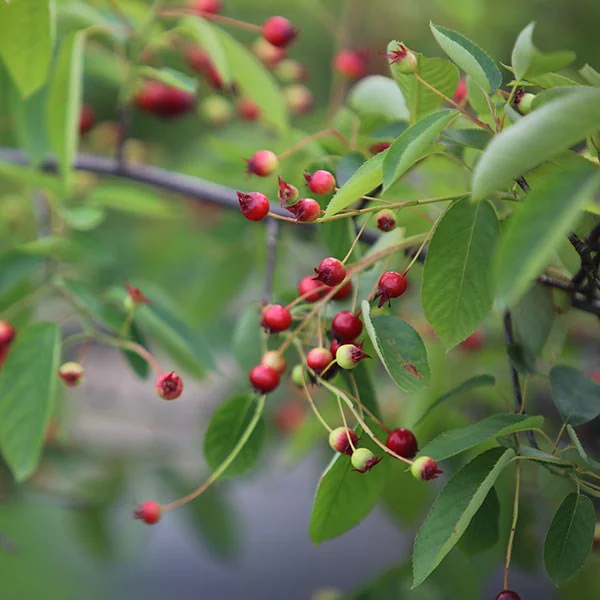
To get the most from your Juneberry, it’s important to plant it in the right environment.
Sunlight:
- Prefers full sun to partial shade.
- Produces the best fruit yield in full sunlight.
Soil:
- Grows well in well-drained, loamy soil but tolerates clay and sandy conditions.
- Slightly acidic to neutral pH (around 6.0–7.0) is ideal.
Watering:
- Needs consistent moisture, especially when young.
- Once established, it’s moderately drought-tolerant but appreciates occasional deep watering during dry spells.
Temperature:
- Hardy down to -30°F (-34°C).
- Handles both cold winters and warm summers with ease.
Planting and Establishing Juneberries
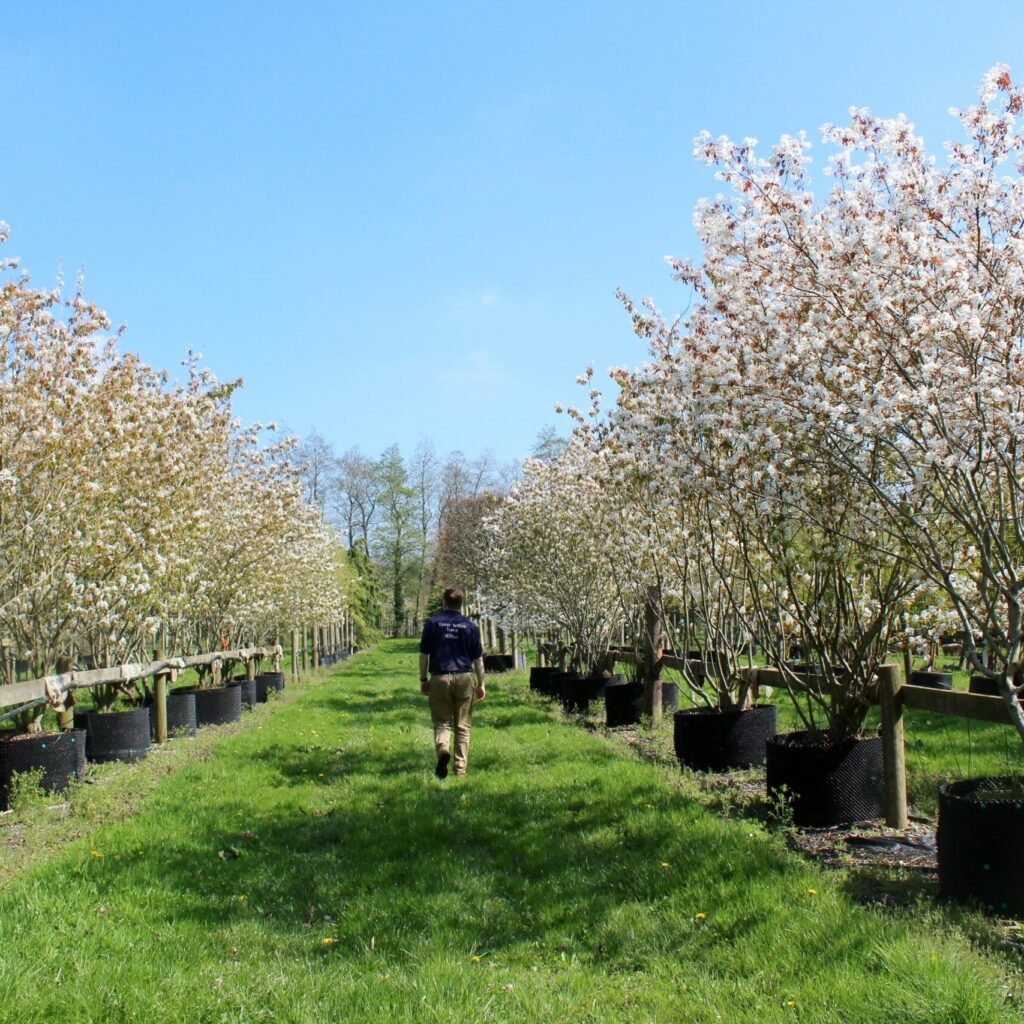
When to Plant:
- The best times to plant are early spring or fall, when temperatures are mild.
Planting Steps:
- Choose a sunny or lightly shaded location.
- Dig a hole twice as wide and as deep as the root ball.
- Loosen the soil at the bottom and mix in compost.
- Place the plant in the hole, ensuring the root collar is level with the soil surface.
- Backfill with soil, firm gently, and water thoroughly.
- Mulch around the base to retain moisture and suppress weeds.
Spacing:
If planting multiple shrubs, leave 6–8 feet between each plant to allow room for growth and airflow.
Caring for Juneberry Shrubs
Watering:
Keep soil consistently moist, particularly in the first year. Once established, water deeply once every 1–2 weeks during dry periods.
Mulching:
Apply a 2–3 inch layer of organic mulch (like wood chips or compost) around the base to retain moisture and regulate soil temperature.
Fertilizing:
Feed lightly in spring with an organic, slow-release fertilizer or compost. Avoid over-fertilizing, as excessive nitrogen encourages leafy growth at the expense of fruit production.
Pruning:
Prune in late winter or early spring to remove any dead or crossing branches. Mature shrubs can also be thinned every few years to encourage better air circulation and fruiting.
Pollination and Fruit Production
Most Amelanchier lamarckii plants are self-fertile, meaning they can produce fruit on their own. However, planting two or more shrubs increases cross-pollination, resulting in heavier yields and better-quality berries.
The flowers attract a wide range of bees and other pollinators, making Juneberry an excellent addition to wildlife-friendly gardens and permaculture landscapes.
Common Pests and Diseases
Juneberries are relatively trouble-free but can occasionally face:
- Birds: The biggest “pest” is often hungry birds! Use netting if you want to harvest the berries for yourself.
- Aphids: Manage with insecticidal soap or neem oil.
- Powdery Mildew: Improve air circulation and avoid overhead watering.
- Rust and Leaf Spot: Keep the area around the shrub clean of fallen leaves and prune out infected stems.
Healthy, well-maintained shrubs usually recover quickly from minor problems.
Harvesting Juneberries
The berries typically ripen in June to early July, depending on the climate. You’ll know they’re ready when they turn deep purple or bluish-black and are slightly soft to the touch.
How to Harvest:
- Pick clusters by hand or gently shake them into a basket.
- Avoid picking too early — underripe berries can be tart.
- Wash thoroughly before eating or processing.
Once harvested, the berries can be eaten fresh, frozen, or turned into a variety of delicious recipes.
Culinary and Medicinal Uses
1. Fresh Eating
Juneberries taste like a blend of blueberry and apple with a hint of almond. They’re delicious eaten straight from the shrub, sprinkled on cereal, or added to salads.
2. Cooking and Baking
Try using Juneberries in:
- Pies and tarts
- Muffins and scones
- Jams, jellies, and preserves
- Smoothies and yogurt bowls
3. Beverages
The berries can also be made into juices, wines, or syrups, offering a rich, fruity flavor perfect for both sweet and savory recipes.
4. Health Benefits
Juneberries are rich in antioxidants, vitamins, and minerals that support heart health, digestion, and immune function. Indigenous peoples have long used these berries for both food and medicine, valuing them for their high nutritional content.
Companion Planting Ideas
Juneberries blend well with a variety of other plants in the landscape. Consider pairing them with:
- Lavender or Sage: For fragrance and pollinator attraction.
- Elderberries or Currants: For a diverse fruit garden.
- Hostas or Ferns: For shady understory planting beneath larger shrubs.
- Ornamental grasses: For texture contrast.
These companions not only look great together but also help create a thriving mini-ecosystem in your garden.
Seasonal Care Routine
Spring:
- Feed with compost or organic fertilizer.
- Prune for shape and remove dead wood.
- Watch for early pests like aphids.
Summer:
- Water regularly and harvest berries.
- Protect from birds if needed.
Fall:
- Enjoy the brilliant foliage.
- Add mulch to prepare for winter.
Winter:
- Minimal care needed; prune if necessary.
- Admire its graceful structure against the snow.
Landscaping Uses
Because of its size and versatility, Amelanchier lamarckii can fit beautifully into many garden designs:
- Specimen Tree: Perfect as a focal point in front yards or mixed borders.
- Hedgerow Planting: Adds edible value to natural hedges.
- Pollinator Garden: Early flowers support bees when few other plants are blooming.
- Wildlife Garden: Provides food and shelter for birds and insects.
Whether you’re designing a cottage garden, native landscape, or modern urban yard, the Juneberry brings elegance and productivity in equal measure.
Final Thoughts
The Juneberry (Amelanchier lamarckii) is truly a gardener’s dream — a plant that feeds the eyes, the body, and the ecosystem. Its early blossoms announce spring, its summer berries nourish both people and wildlife, and its fiery autumn colors bring the growing season to a brilliant close.
Easy to grow, adaptable, and endlessly rewarding, this plant proves that you don’t have to choose between beauty and usefulness. Whether you’re looking to enhance your edible garden, support pollinators, or simply enjoy something extraordinary in your yard, the Juneberry delivers.
So, this year, consider planting a Juneberry shrub — and enjoy the cycle of flowers, fruit, and fall color that makes this species one of the most charming additions to any landscape.
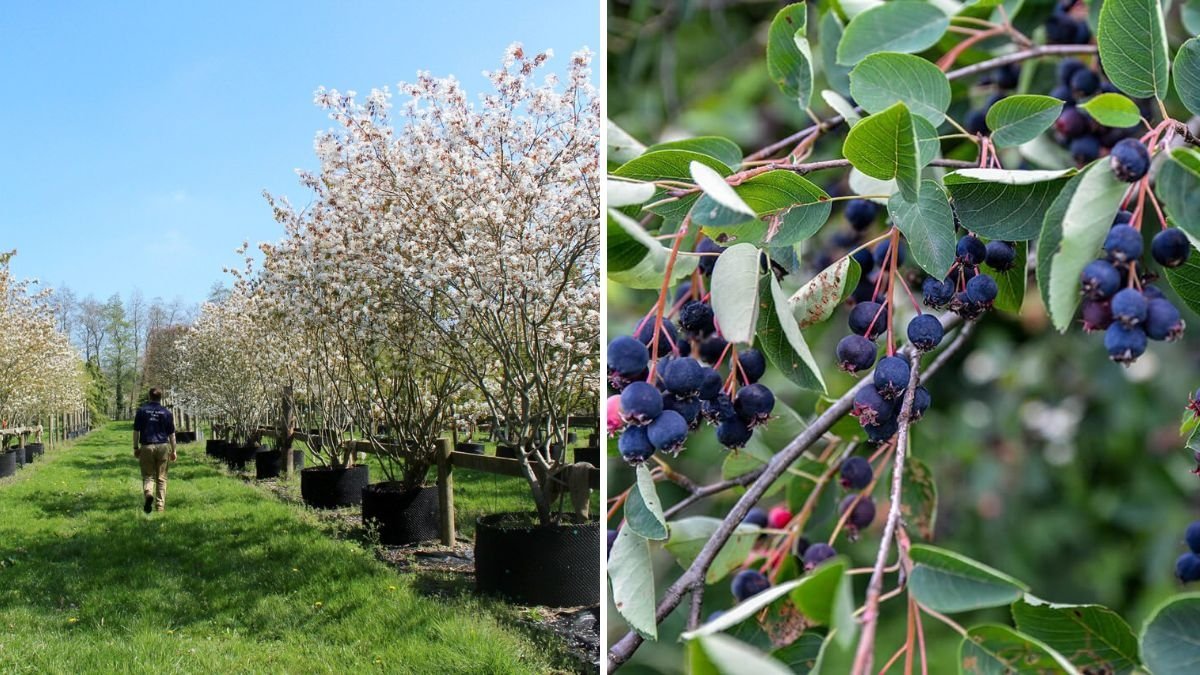
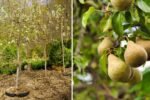


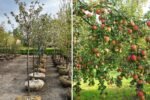

Leave A Comment